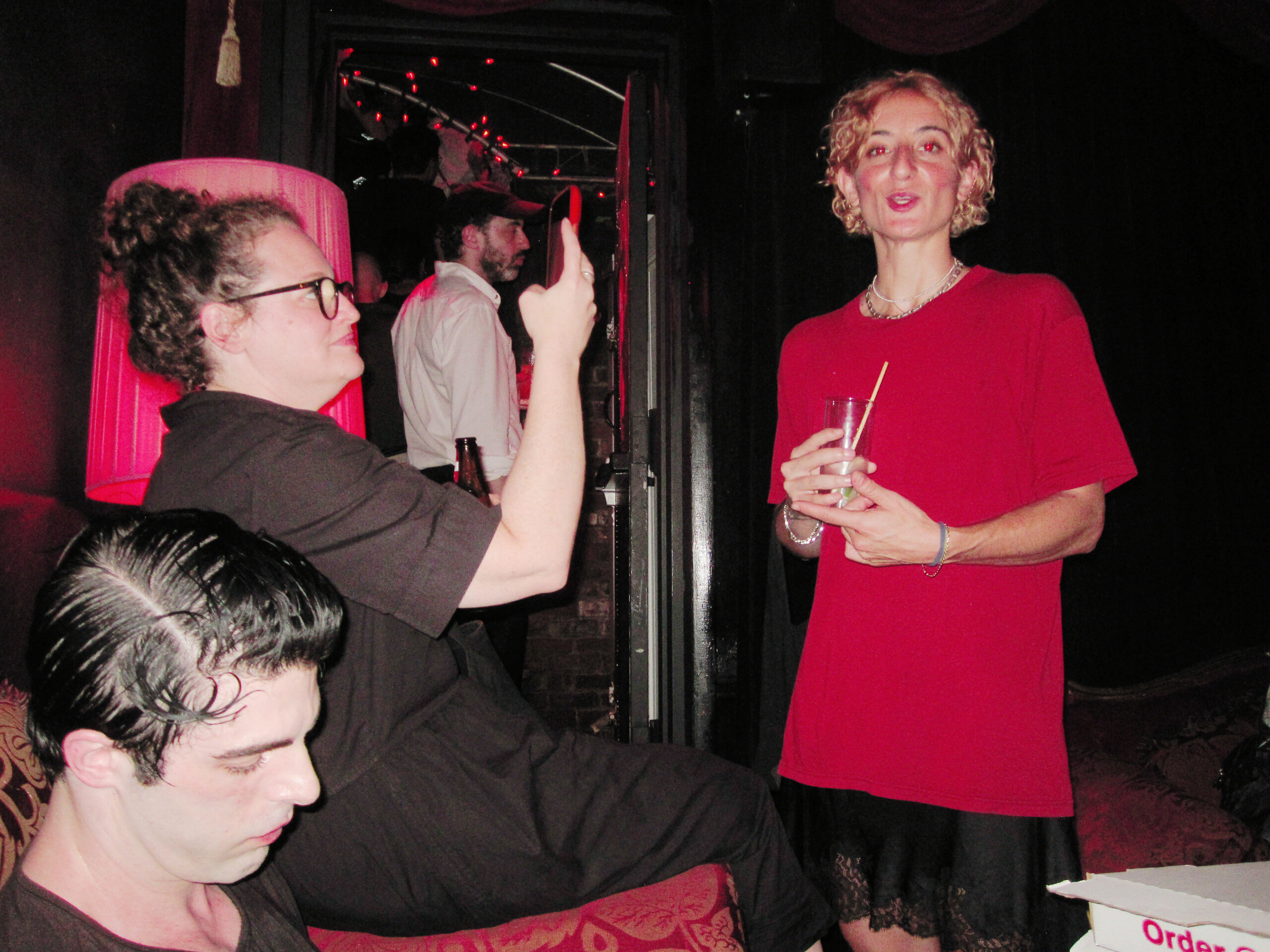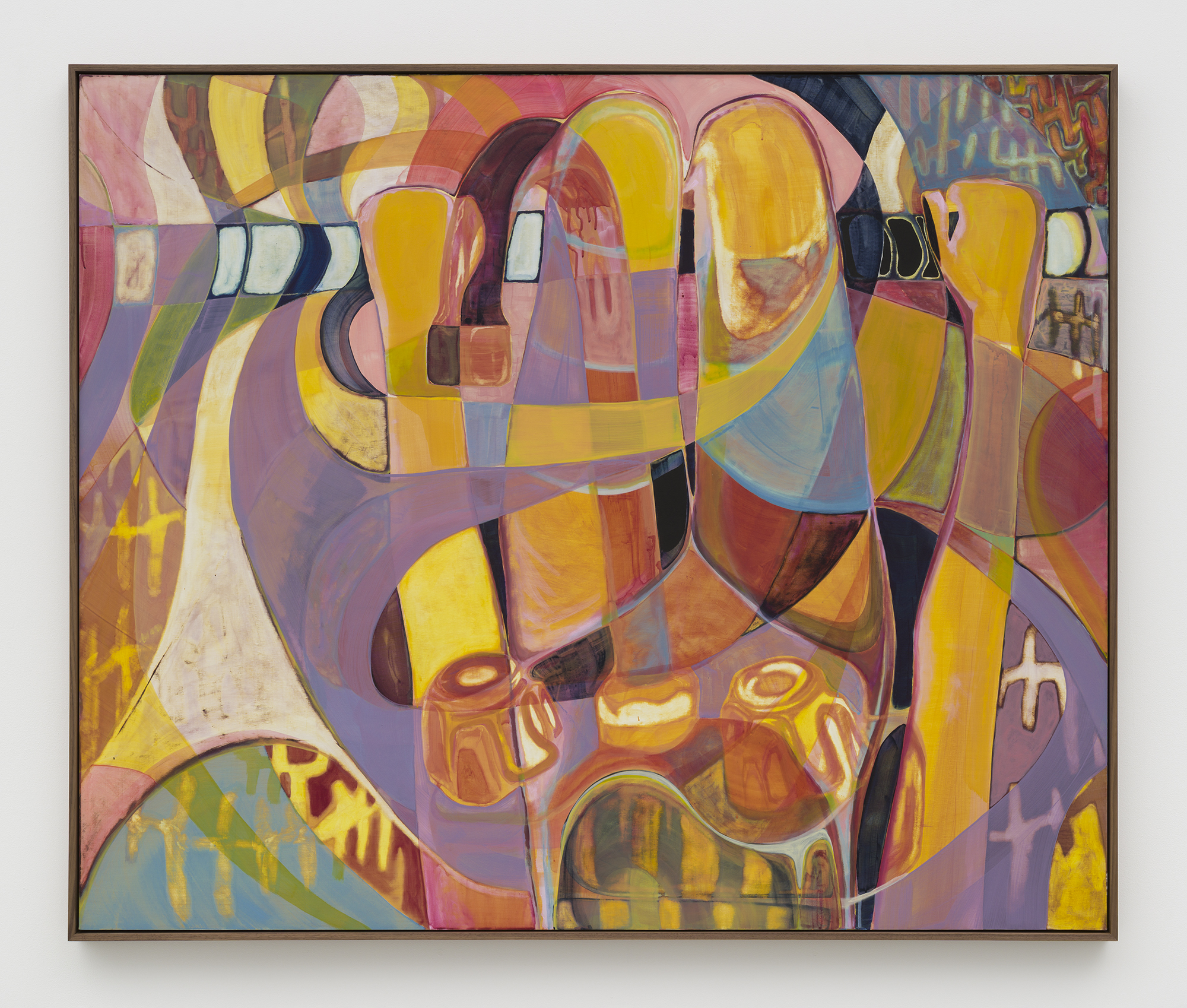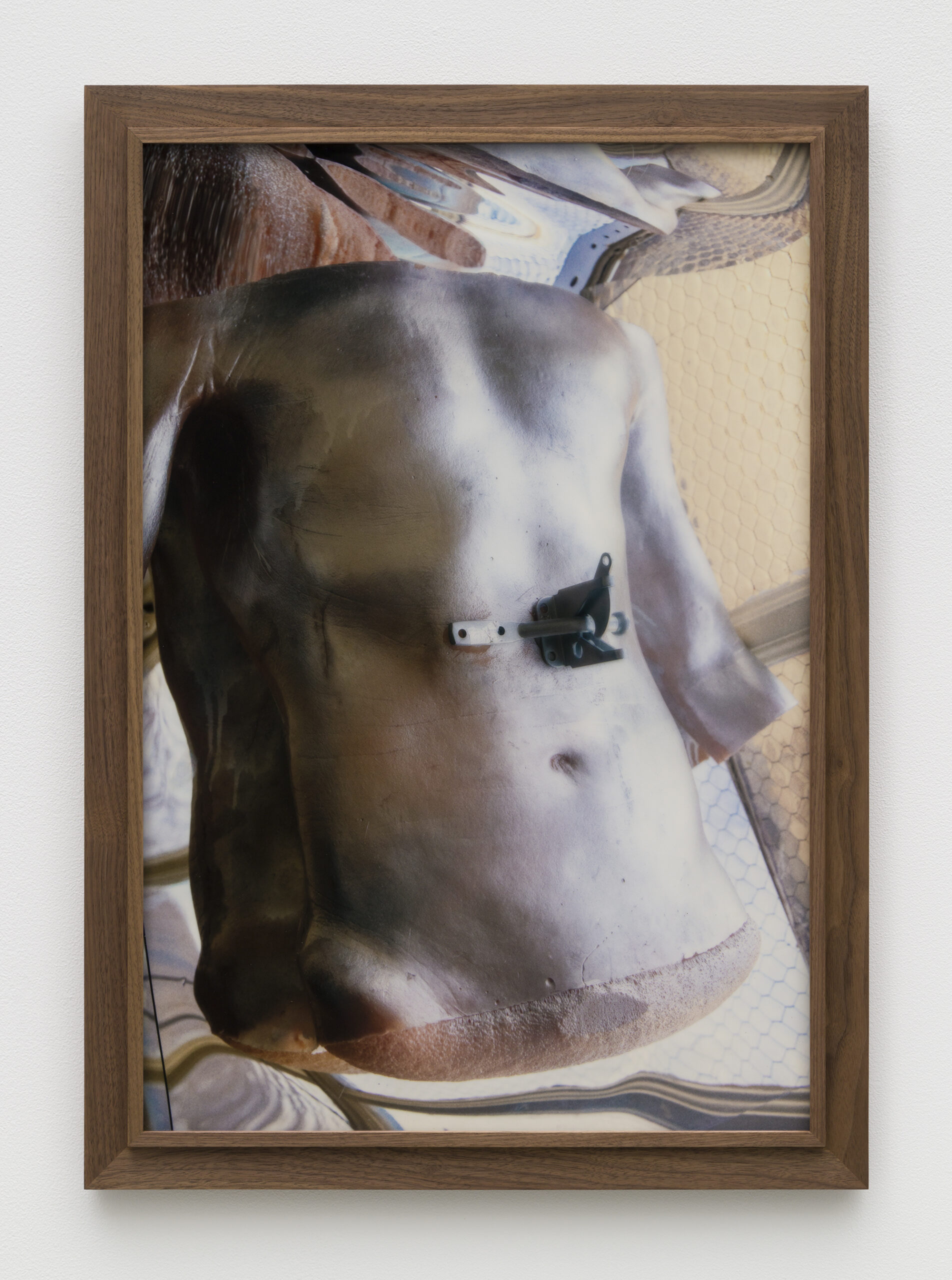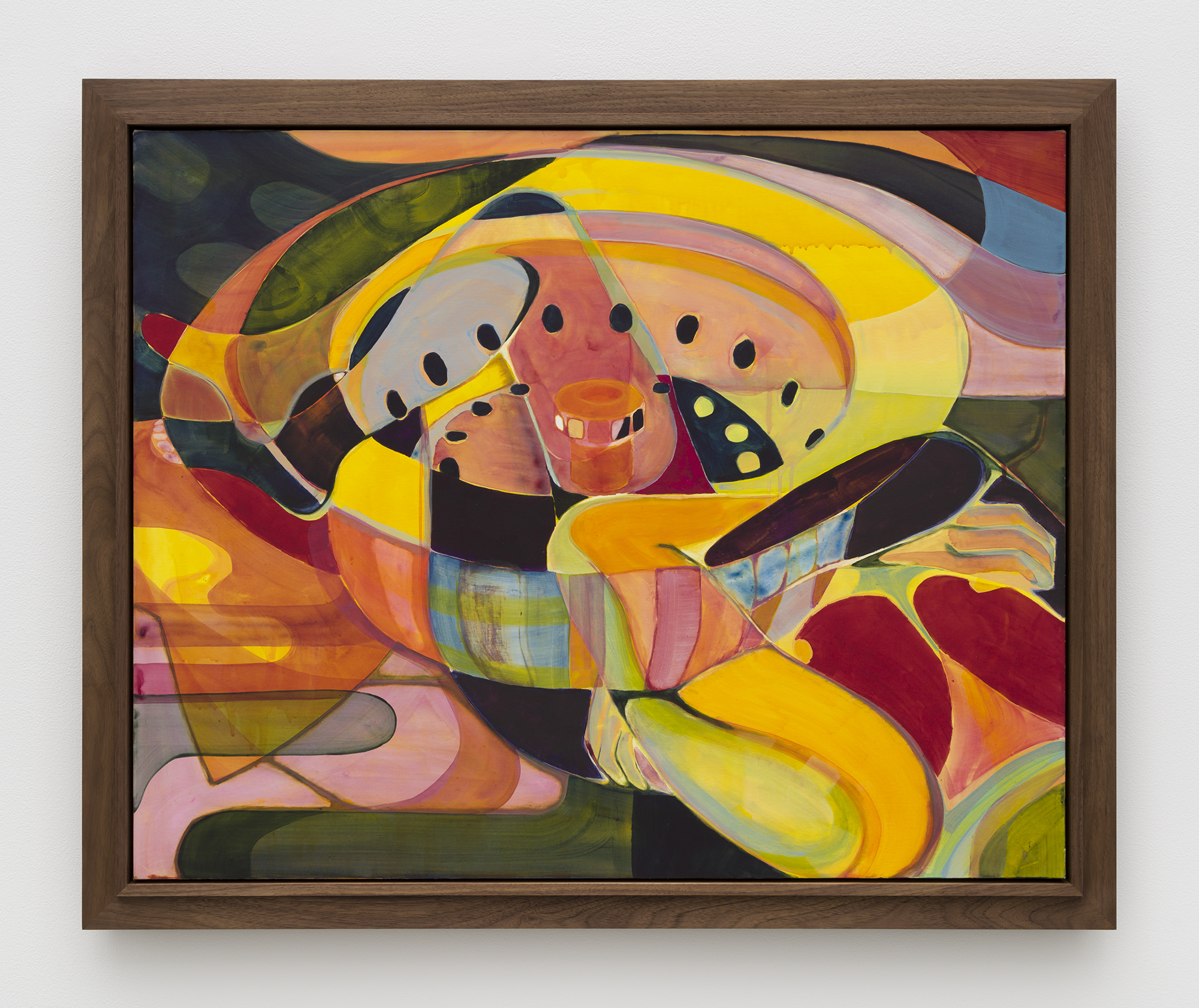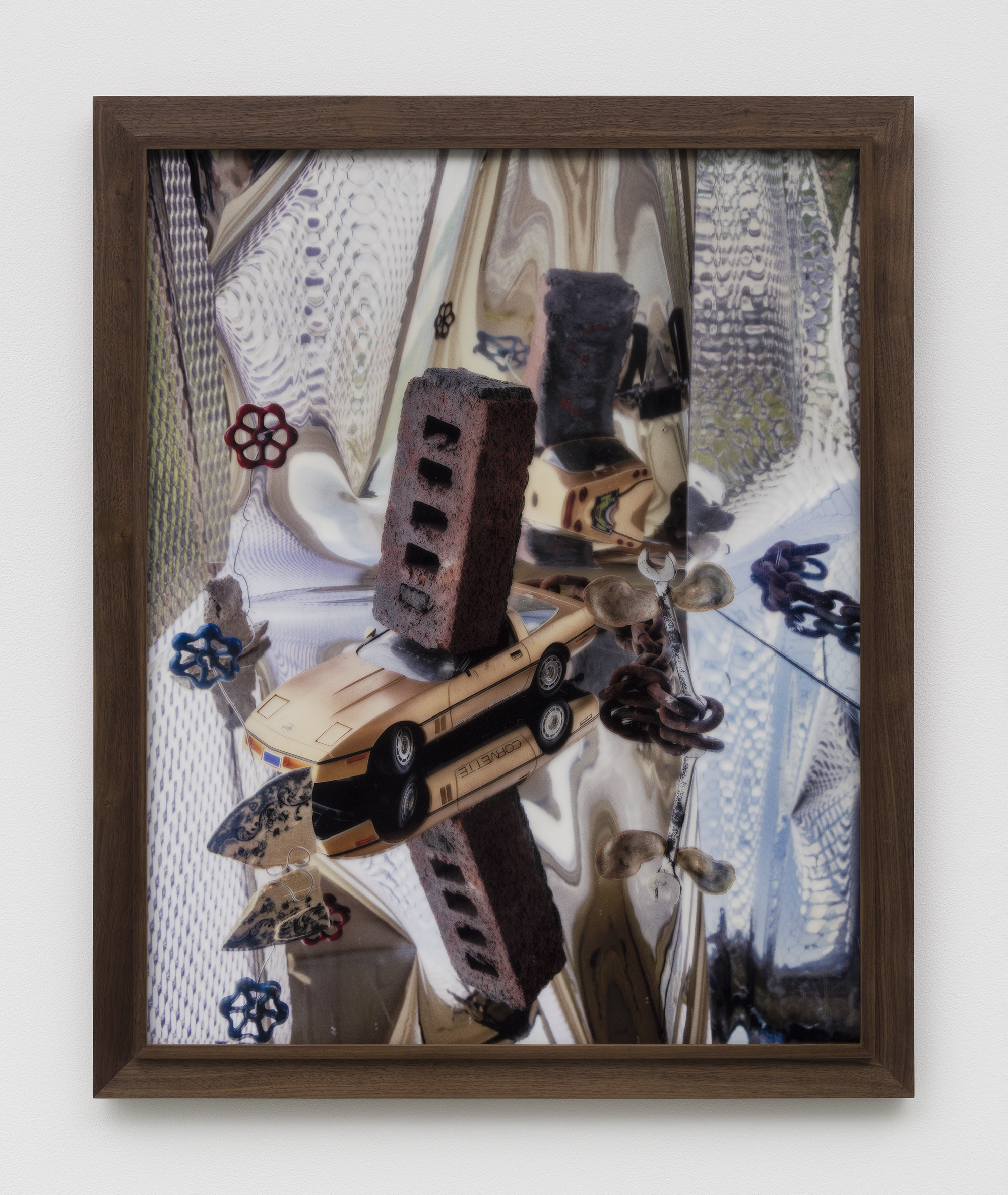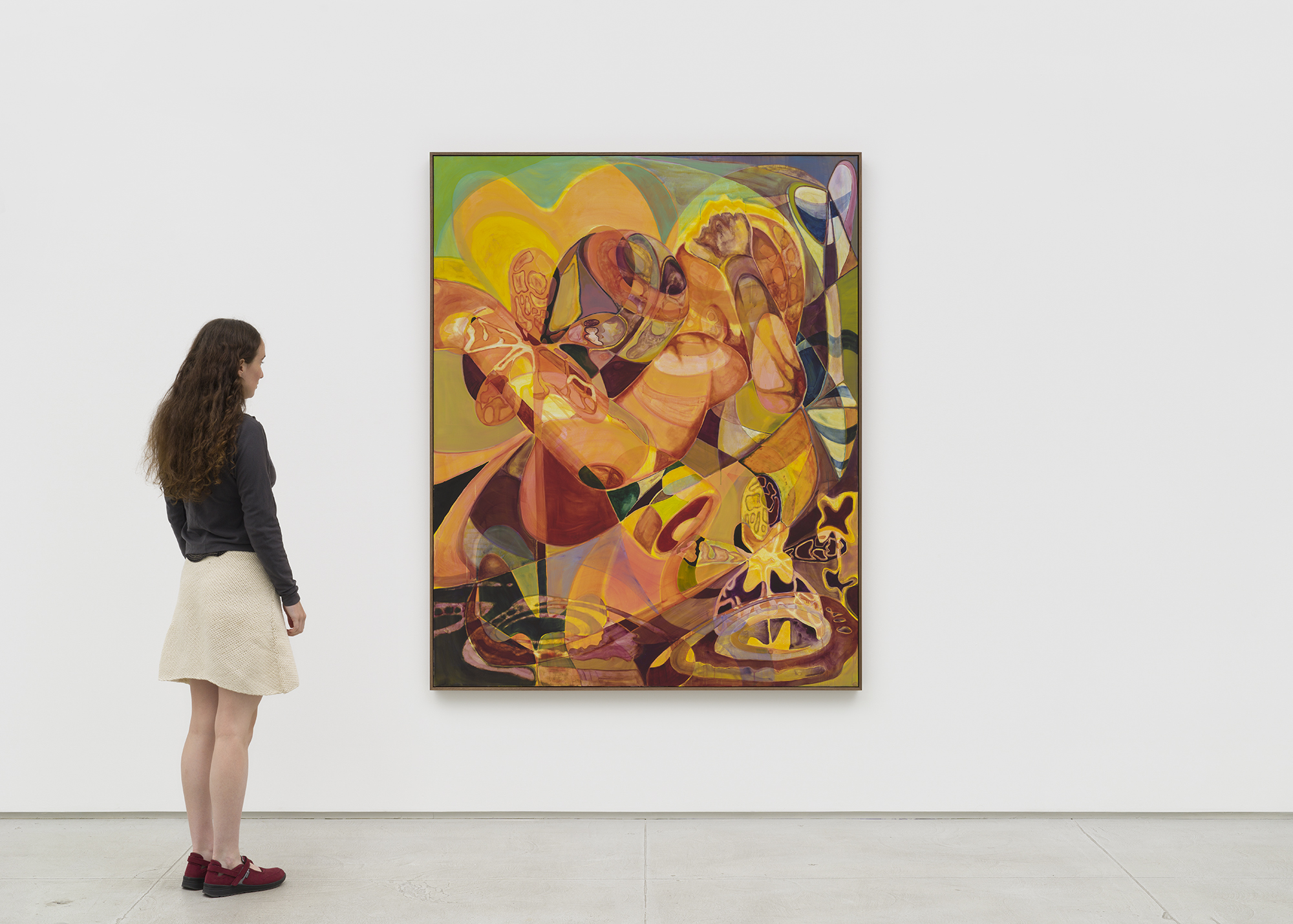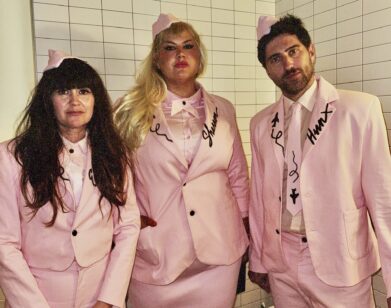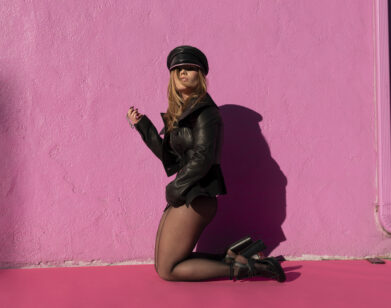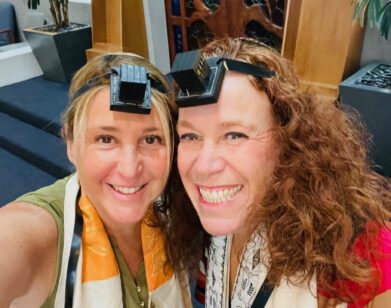STUDIO VISIT
Willa Nasatir on the Artful Distortions of Her New Exhibition at Chapter NY
“There’s something to the idea that you have to leave the place you’re from in order to understand the parts of it that you identify with or relate to,” says Willa Nasatir, who left Los Angeles for New York at 18. In her new, self-titled show at ChapterNY in TriBeCa, one notices the influence of both cities, in the vibrant, warm colors of her paintings and the soft grunge of her photography, which incorporates everyday materials like mirror, glass, and mylar and calls to mind the days of Flickr. On a warm Thursday afternoon just before Nasatir’s early aughts-style opening party at MadameX, I paid a visit to the gallery, where the artist and I delved deeper into her third exhibition, spirituality, her days working at American Apparel, and the poetry of Irene Silt.
———
CHLOE SHAAR: Where are you from originally?
WILLA NASATIR: L.A., actually. I’m from Santa Monica. I live in New York. I’ve lived here since I was 18. New York is where I belong, but more and more I see how California has formed me. It’s almost in the palette of my work, at least at this moment. I think there’s something to the idea you have to leave the place you’re from in order to understand the parts of it that you identify with or relate to.
SHAAR: [Points to one of Nasatir’s works] I love this one.
NASATIR: Thank you. I make these constructions in my studio that are made from mirrors and glass and Mylar. And this is just a straight photo, it’s not collaged in any way, but the way that the image gets broken up through distortion makes it kind of appear like it’s floating in space. It’s not that I’m trying to make anti-digital art in any way, but I’m more curious about how unexpected effects occur in the instrument of the camera rather than the computer.
SHAAR: Some of them have such a grunge, almost musk layer to them, but then others are these almost delicate and warm. It’s a mixture of L.A. and New York.
NASATIR: You mean my slip and my t-shirt?
SHAAR: No, exactly. So what else are you drawing inspiration from?
NASATIR: There’s something about two contradictory things and being able to demonstrate the ways that oppositional things can exist within one artwork. I think about that stuff in a more spiritual way.
SHAAR: Are you religious at all?
NASATIR: No, I’m not religious. I was not brought up with much religious grounding. I like the way that there are these self-contained systems of thought that can show people how to think about the universe or consider things that are unknown. A lot of people bring up psychedelia when they look at my work and ask me if I’m into psychedelics.
SHAAR: That was going to be one of my questions.
NASATIR: I mean, I’m not a tripper by any means. But I think the thing that’s interesting to me about psychedelia is dissolving the edges of something. Once you think you understand a form or an identity or what something means, it shape-shifts. And that’s a very appealing mode of processing the world to me. I feel like it exists within my art also; you look at something for long enough and something else appears.
SHAAR: Do you have a preference between painting and photography?
NASATIR: At this point, one explains the other. My photos show you how to look at my paintings. Whenever I’m doing one too much, it makes me miss the other. My friend once told me, “You’re like a cat that leaves the door left open in order not to leave.” I need to go really far in one direction in order to be able to come back to the other.
SHAAR: Have you always wanted to be an artist?
NASATIR: When I was a teenager, I was a lifestyle photographer. I was really active on this photo sharing community called Flickr, and I had all these friends on there: SoiL Thornton, Nina Hartmann, whose show opens at Silke Lindner the same night as mine. All these people who became artists who were taking pictures in whatever suburban environment we were in and posting them online and trying to look cool. Then I worked for American Apparel when I was a teenager.
SHAAR: Another California staple.
NASATIR: Yes, a deeply California experience. The creative director of the company, Iris Alonzo, took me under her wing as her protégé. I would take pictures of my friends and stuff and create content and advertising for the company.
SHAAR: Any crazy stories from the American Apparel days? That was literally their royalty era.
NASATIR: I thought it was really cool, too. I’m trying to think of how to say it, but there’s something about being a teenage girl and trying to mirror or reproduce the eye of a creepy, sleazy guy, and doing that in service of this company. It was about mimicry and effectiveness, the way that something casual can also be really controlled or specific. I think that all came into my photography and trying to understand how the artifice of photography can cast this tone onto all sorts of different things.
SHAAR: Right. So what happened next when you came to New York?
NASATIR: Well, when I came to New York, I was like, “Okay, what does it mean?” All of the things that I thought I was doing to be an artist, actually, that are really corrupt. I was exploiting people’s bodies. How do you make art that doesn’t fall into those kinds of power dynamics? As a teenager, I was like, “Oh, no, what have I done?” I think it was an important experience to learn to question.
SHAAR: “I actually don’t want to be desired by 40-year-old men.”
NASATIR: Right. Or, am I the 40-year-old man, or am I different from the 40-year-old man, or what? I came to New York and I was like, “How do you take pictures of people that are portraits, that are sexy, but not with someone else’s body in them? How do you create some kind of vibe without being extractive?” So that was my first wave of understanding myself as an artist, when I got to college. I went to Cooper Union, and that was what the school prompted me to think about. I stopped taking pictures of people. Then, I figured out how to render something that feels specific and about personality and about the people that I know or moments in my life without disfiguring something.
SHAAR: On that note, how big a role is sex playing in these pieces?
NASATIR: I think sex is in everything. The things that I paint are both bodies and inanimate objects. There’s something interesting to me about the non-human being imbued with human or desirable or desiring qualities. But it’s so subjective. Some people tell me my work looks really violent and some people are like, “It’s sexy.” It depends what people are into.
SHAAR: To me, it gives vibrant and pleasurable.
NASATIR: There’s a book that’s been very important to me. It’s a book of poems by Irene Silt, and it’s called My Pleasure. It’s all about how you can derive pleasure from an existence that is often not pleasurable. Those poems really show you how seeing beauty in a difficult world can be a propulsive force towards a richer life for everybody, painting does that for me.
SHAAR: I was looking at your work from two, three years ago, even 2017. It’s obviously similar in terms of style, but it’s so different in terms of range.
NASATIR: I think the goal is to live in a world where we allow one another to change. And I’ve experienced that within my work.
SHAAR: What else are you drawing inspiration from? What are you doing when you’re not making art?
NASATIR: I drive around outside of New York City as much as possible.
SHAAR: Right. You were telling me how you were just in Maine.
NASATIR: I went to North Carolina too. Oh, now I’m not talking about the fact that I rock climb, but I do.
SHAAR: Do you rock in Brooklyn?
NASATIR: Yeah. [Laughs]. But we’re not talking about that.
SHAAR: Have you been in love?
NASATIR: Sure have. Have you?
SHAAR: Yeah, I think so. What’s your sign?
NASATIR: Cancer.
SHAAR: There it is. So you’ve never needed to think.
NASATIR: Yeah. I think I’ve never understood the idea of people only being able to work when they’re suffering or something. Or that making art is connected to pain, necessarily. I’ve seen beautiful work that’s about sublimating those feelings, but that’s not my experience.

